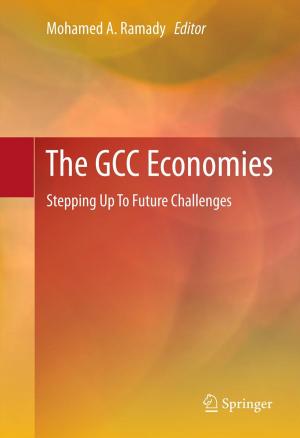Topics in Theoretical and Computational Nanoscience
From Controlling Light at the Nanoscale to Calculating Quantum Effects with Classical Electrodynamics
Nonfiction, Science & Nature, Science, Chemistry, Physical & Theoretical, Physics, Mathematical Physics| Author: | Jeffrey Michael McMahon | ISBN: | 9781441982490 |
| Publisher: | Springer New York | Publication: | June 24, 2011 |
| Imprint: | Springer | Language: | English |
| Author: | Jeffrey Michael McMahon |
| ISBN: | 9781441982490 |
| Publisher: | Springer New York |
| Publication: | June 24, 2011 |
| Imprint: | Springer |
| Language: | English |
Interest in structures with nanometer-length features has significantly increased as experimental techniques for their fabrication have become possible. The study of phenomena in this area is termed nanoscience, and is a research focus of chemists, pure and applied physics, electrical engineers, and others. The reason for such a focus is the wide range of novel effects that exist at this scale, both of fundamental and practical interest, which often arise from the interaction between metallic nanostructures and light, and range from large electromagnetic field enhancements to extraordinary optical transmission of light through arrays of subwavelength holes.
This dissertation is aimed at addressing some of the most fundamental and outstanding questions in nanoscience from a theoretical and computational perspective, specifically:
· At the single nanoparticle level, how well do experimental and classical electrodynamics agree?
· What is the detailed relationship between optical response and nanoparticle morphology, composition, and environment?
· Does an optimal nanostructure exist for generating large electromagnetic field enhancements, and is there a fundamental limit to this?
· Can nanostructures be used to control light, such as confining it, or causing fundamentally different scattering phenomena to interact, such as electromagnetic surface modes and diffraction effects?
· Is it possible to calculate quantum effects using classical electrodynamics, and if so, how do they affect optical properties?
Interest in structures with nanometer-length features has significantly increased as experimental techniques for their fabrication have become possible. The study of phenomena in this area is termed nanoscience, and is a research focus of chemists, pure and applied physics, electrical engineers, and others. The reason for such a focus is the wide range of novel effects that exist at this scale, both of fundamental and practical interest, which often arise from the interaction between metallic nanostructures and light, and range from large electromagnetic field enhancements to extraordinary optical transmission of light through arrays of subwavelength holes.
This dissertation is aimed at addressing some of the most fundamental and outstanding questions in nanoscience from a theoretical and computational perspective, specifically:
· At the single nanoparticle level, how well do experimental and classical electrodynamics agree?
· What is the detailed relationship between optical response and nanoparticle morphology, composition, and environment?
· Does an optimal nanostructure exist for generating large electromagnetic field enhancements, and is there a fundamental limit to this?
· Can nanostructures be used to control light, such as confining it, or causing fundamentally different scattering phenomena to interact, such as electromagnetic surface modes and diffraction effects?
· Is it possible to calculate quantum effects using classical electrodynamics, and if so, how do they affect optical properties?















